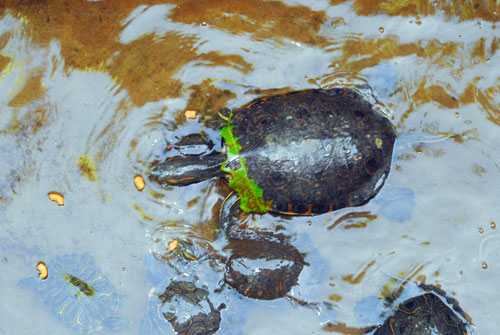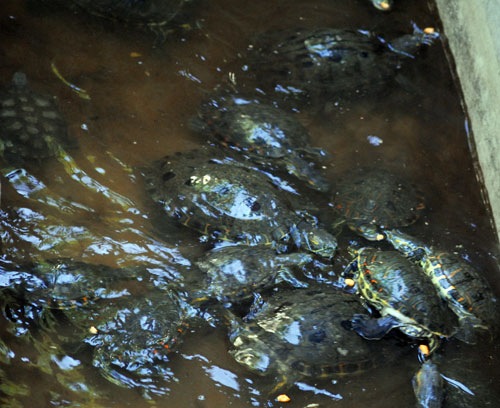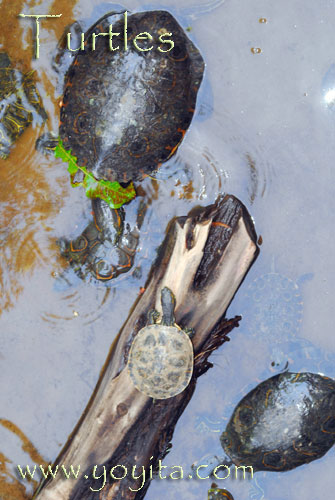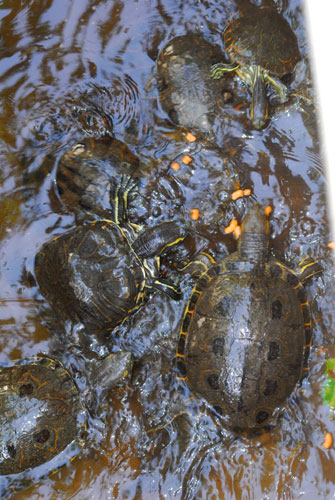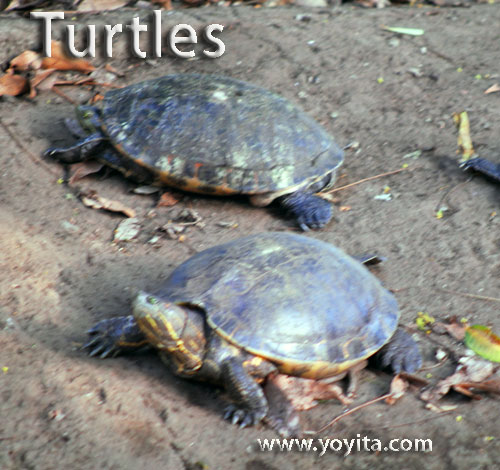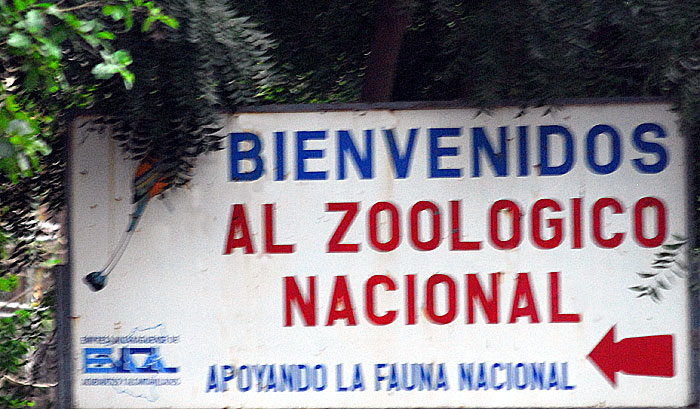Turtles:
Kingdom: Animalia
Phylum: Chordata
Class: Sauropsida
Order: Testudines
Linnaeus, 1758
Suborders
Cryptodira
Pleurodira
The first turtles are believed to have existed in the early Triassic Period of the Mesozoic era, about 200 million years ago. Their exact ancestry is disputed. It was believed that they are the only surviving branch of the ancient clade Anapsida, which includes groups such as procolophonoids, millerettids, protorothyrids and pareiasaurs. All anapsid skulls lack a temporal opening, while all other extant amniotes have temporal openings (although in mammals the hole has become the zygomatic arch). Most anapsids became extinct in the late Permian period, except procolophonoids and possibly the precursors of the testudines (turtles).
However, it was recently suggested that the anapsid-like turtle skull may be due to reversion rather than to anapsid descent. More recent phylogenetic studies with this in mind placed turtles firmly within diapsids, slightly closer to Squamata than to Archosauria. All molecular studies have strongly upheld this new phylogeny, though some place turtles closer to Archosauria. Re-analysis of prior phylogenies suggests that they classified turtles as anapsids both because they assumed this classification (most of them studying what sort of anapsid turtles are) and because they did not sample fossil and extant taxa broadly enough for constructing the cladogram. Future analyses may show the turtles to be relatives of the placodonts. But they are also closer to lizards than they are to archosaurormophs, including placodonts.
A new phylogenetic analysis agrees with prior analyses nesting turtles with pareiasaurs within the much larger clade, Lepidosauromorpha. The closest pareiasaur to turtles appears to be a rarely-studied form, Stephanospondylus. Indeed turtles are related to other reptiles without temporal openings.
The earliest known modern turtle is proganochelys, though this species already had many advanced turtle traits, and thus probably had many millions of years of preceding "turtle" evolution and species in its ancestry. It did lack the ability to pull its head into its shell (and it had a long neck), and had a long, spiked tail ending in a club, implying an ancestry occupying a similar niche to the ankylosaurs (though, presumably, only parallel evolution).
Tutles illnesses
trauma on legs or carapace, respiratory illnesses, fungal infections, obesity, lack or excess of vitamins, Anorexia post-hibernaci´┐Żn, digestive problems, (diarrhea), bucal infections, egg retention, parasites, kidney insufficiency |


